#because slugs absolutely love yeast
Explore tagged Tumblr posts
Photo

Fanart of slugcat dying in a beer trap
#rain world#ask to tag???#anyway the joke is that if you have garden snail/slug problems the most common trapping method is beer#because slugs absolutely love yeast#so i just wanted to make a joke about random garden pest trivia i guess#glue trap#glue trap meme#drowning
390 notes
·
View notes
Text
GENERIC JAPANESE PUN AND/OR OBVIOUS CULTURAL REFERENCE: My Experiences At Hyper Japan
The people at Hyper Japan, which ran from Friday until today, ranged from a duo dressed as the twins from Ouran Highschool Host Club, Godzilla himself (whose terrible hand I had the pleasure of shaking), and dozens of people wearing meme t-shirts. So far, so MCM. What set Hyper Japan apart from a more usual celebration of mangakas and mecha were the somewhat terrifying woman in johdpurs from the Tea Authority, a room dedicated to over a hundred different types of sake, beer and spirits, and the significant attention paid to Japanese craftsmanship.

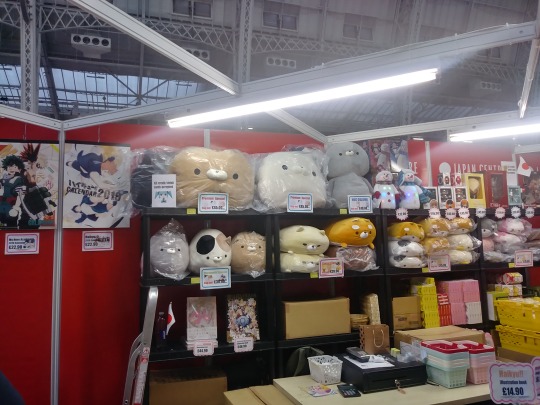
But of course, since this is after all a food blog, let's talk about the food. At the very beginning, I was collected from the front desk by two charming women from Fourteen Ten. We headed immediately to The Ramen Experience, where I was given a choice between shoryu, paitan and tonkotsu style ramen, and a chance to sample all three before deciding on which one I was to have in my bowl. Each comes from a different region, and each is distinct in flavour and mouthfeel. Shoryu, or soy sauce, was rich and roasty, effortlessly smooth and slightly sweet. Paitan, which, on the website was described as a chicken-based soup, was in person labelled as seafood stock. Either way, it was remarkably unfishy, and had a prominent, pleasant taste of both fresh and roast garlic. Tonkotsu is the neighbourhood darling style, a milky-cloudy broth made by cooking bones and feet for dozens of hours. A good tonkotsu should be gutsy, slightly thick, impossibly creamy and pure tasting. While the one I tasted was perfectly adequate, it did not live up to my expectations about what tonkotsu ought to be. As a result, I had a delicious bowl of shoryu ramen, with both gari, aka pickled ginger, and something that tasted like yacai, Szechuan pickled mustard greens (sour, slightly funky, a little bitter and lightly spicy) and along with the obligatory slice of chasu. Despite that the noodles lacked much of a bounce or snap, and the chasu wasn't fatty enough for my taste, it was a bowl worth finishing. That sounds like a lot of criticism mixed in with some faint praise, but no, outside of a couple stylistic choices, it was a bowl I'd be more than happy with at a restaurant, and would have been proud to make at home (I've tried making ramen. I've followed Binging with Babish's method, J Kenji Lopez Alt's version, and the edition found in Japanese Cooking: A Simple Art, whose title is possibly the biggest lie ever told. All of them were difficult, all of them were an obscene amount of work, all of them were frankly not worth the effort. If I find a method that works and doesn't make you want to die, I'll be sure to let you know.)

After that, the Fourteen Ten people let me loose on the stalls. I wandered past a woman selling EGL (Elegant Gothic Lolita) fashion, several weapons salesmen and a very busy stall selling manga both in the original and translated. Nearby, there were tables groaning with dolls and plushies, and there, over the way, were dakikamura, or body pillows, featuring characters from the Boku No Hero Academia anime. On the main floor, there was a condensed area where Japanese designers, artists, and craftspeople sold beautiful things, such as calligraphy, immaculate flowers made of silk, and shamiasen, traditional stringed instruments. I asked the person running the shamiasen stall if I could touch, and she leaned forward, rested a single finger on its body, and gave me a thumbs up. In short: no. I managed to get (very brief!) interviews with four different stallholders. I felt that since I was there, I might as well go do some journalism. I got brief peeks into the minds of two artisans, and one of the husband-and-wife teams selling swords, axes, and blades of all kinds:
The weapons sellers, Lee and Catherine, used to be in the business of selling replica toy handguns, until the law changed (presumably following the Dunblane massacre but neither mentioned it and nor did I). When that happened, it made replica guns a lot harder to sell. So instead, they moved on to selling swords, and especially movie replicas. It only made business sense for them to go to Comicon. Catherine's favourite is a massive bastard from World of Warcraft, while Lee favour's LOTR's Andruil. They don't think that any of their wares ought to be used for anything other than ornamental purposes, though you could technically use them for bushcraft.

The next pair I spoke to were Tomoko Kuroda, and her friend Yuko. Since their design heavily featured a pair of cats, one black, one white, named Alain and Jean, I asked whether they belonged to them, and about their personalities. While Alain and Jean aren't their real names, they are indeed their cats, and the characters of the globetrotting gatos – ones that are “curious and fickle, but very fussy with their travel items”. have existed for two years. Kuroda collaboarated with the famous artist/illustrator called Masako Hirano. A fact about each cat is that Alain is very interested about everything and very positive, while Jean is sensitive and naive, and likes to study hard. However, according to the info card I received, “Our effort to analyse their psyche might be pointless but this is our pleasure and mission nevertheless. This interpretation of the world seen by cats' eyes is our unique brand story.” Here, here!

You can find their e-boutique here.
While many people have heard of origami, comparatively few know about kirigami. I had the privilege of speaking to Susumu Yamayoka, who won the Grand Prize for the Charming Japanese Souvenir Contest back in 2011 for his City Postcard kirigami series. Kirigami is the art of paper-cutout. Yamayoka's series celebrated traditional Japanese scenes in aching, intricate detail – unsurprising, since Yamayoka told me that he's been doing papercraft for the last two decades. It took Yamayoka two months to design four postcards.His website is here
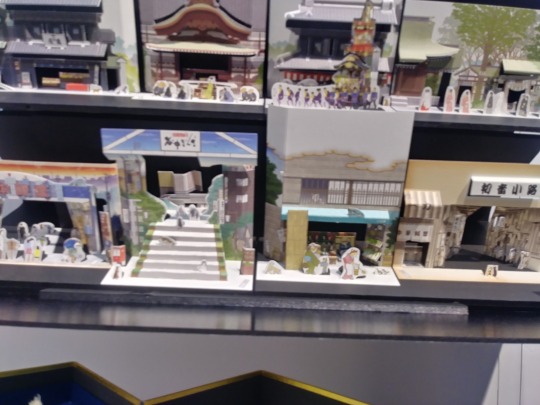

While there were many other stallholders, demonstrating mastery in mulberry-paper bookbinding, and watercolours, I did not have time to interview them all.
Then, I made a nice trip into the grimy speakeasy at Hyper Japan known as The Sake Experience. You rocked up, received about sixteen drinks tickets and two snacks tickets, and waddled around from table groaning with artisanal handmade drinks to table groaning with artisanal handmade drinks. Now, for those who've not had a sake experience, let alone The one; sake is a fermented rice beverage with a taste that uninitiated westerners may find quite unfamiliar. A good way to describe it is “like a grassier, fruitier dry sherry”, but since there are as many styles and traditions in sake brewing as there are in, say, French winemaking, the description I gave is insufficient. Another point about sake is that it can be drunk hot or cold. I remember saying when I was fourteen, having tasted my first hot sake, I said it tasted like “warm, unminty mouthwash”. It probably wasn't good stuff, but, as with many things, it's an acquired taste. I imagine that a mug of warm sake on a howling and bitterly cold Nagoya night would be comforting. As for the process of making sake, it involves inoculating cooked rice with Aspergillus oryzae, known in Japanese as koji, a fungus that transforms starches and sugars found in rice into alcohols. It's absolutely nothing to be afraid of, it's the rice edition of our homegrown hero, Saccharomyces cerevisiae, without whose noble efforts we'd never slug down a sixpack of PBR again – not that PBR has much of a future in our world. Cooked rice, koji, water, yeast and lactic acid are combined – at least in sake-houses that forsook the old way of doing things, where the rice and koji mixture is pounded to a paste – and the resultant mixture fermented. This is then pressed to remove unfermented solids, filtered once more, and then left to mature, like one would with wine.
For absolute beginners, I would suggest investing in a bottle of Shochikubai Shirakabegura Mio Sparkling Sake, not just because it doesn't have that much of a challenging koji flavour, but because it's significantly nicer than cat piss cava or bland prosecco. It has a gentle fragrance, is just the right side of sweet, and the carbonation adds both a sour note and makes it feel more refreshing. It isn't brut like champagne, more, a gentle, friendly face to pick up for a pleasant night in. I had the luck of picking up a bottle for £4 at the event – they were practically giving it away.

For those still a bit too afraid, there are a wide variety of Japanese fruit liqueurs. These often aren't like schnapps or are lighter fluid with a few drops of synthetic peach essence. Many Japanese fruit liqueurs, such as umeshu, have an ABV of about 12%. Umeshu is made by soaking whole green plums in grain alcohol, which is consequently watered down and sweetened. A different liqueur that I had the pleasure of drinking at Hyper Japan was Yomeishu Pink Grapefruit and Ginger (top); “precisely what it says on the tin!”, according to my tasting notes; a lusciously smooth and mild bev, tasting of real – if candy-sweet – fruit, like a boozier, top-quality alcopop. It was only later that I discovered that Yomeishu's flagship is a TCM (I use the “C” here generically) herb liqueur containing, of all things, the processed skin and organs of the mamushi pit viper, Gloydius blomhoffii. Unfortunately, I did not taste the snake tonic since it wasn't on offer, but had it been, I would probably have declined because I don't want to drink snakies. Nevertheless, snake-flaying aside, the good brewers at Yomeishu can make a lovely drink. The one umeshu I sampled , Urakasumi (buttom), was “bracing[ly] plummy” with an “almond bitter aftertaste”. As I don't have considerable umeshu experience, it was perfectly nice.

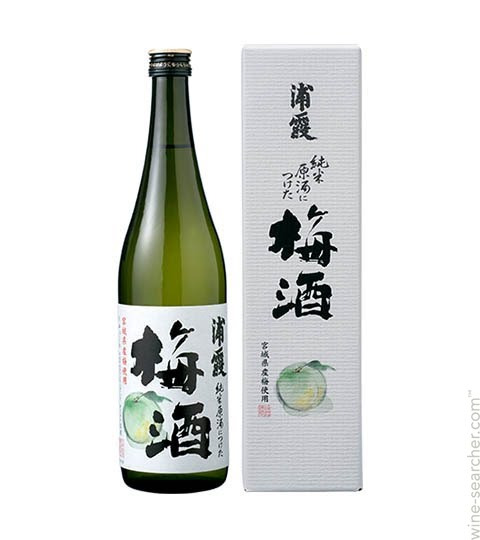
There were other types of sake on offer, such as the Yamabuki Gold, an aged sake, or koshu. The difference between a younger sake and a koshu is rather like a tequila blanco and añejo: the aged edition acquires a bronzeish colour and a deeper, often honeyish taste. I described the 7-time-in-a-row International Wine Challenge gold winner as having a “burnt toffee” character, “hypersmooth”, and with a “savoury aftertaste.”
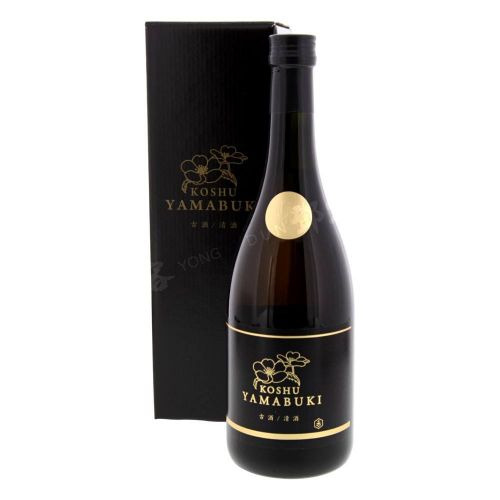
On the complete opposite end of the spectrum was the Junmai Ginjo Sachihime Dear My Princess, charmingly subtitled in block capitals with ALL THE BEST WISHES FOR YOUR FUTURE LIFE. I described the unpasteurized sake from what is apparently the smallest brewery in the Saga prefecture (found on Kyushu, the southern island making up Japan proper) as “sweet, creamy, esteric and smooth.” Following some basic research into sake tasting terminology, this “esteric”- or “fruity” quality is also known as ginjo, which is the resulting fragrance from the slow and low fermentation of rice whose exterior is mostly removed. Two compounds that contribute to ginjo fragrance are isoamyl acetate, well known to any brewers in the audience to being one part of the duo in many Hefeweizens, the other being clove. Due to my experiencing isoamy acetate almost always in conjunction with the phenolic compounds that made up clove, I iniitally had written down “phenolic” instead of “esteric”, and then had second thoughts as I noticed more classical fruit elements evolve, such as ethyl caproate – another ginjo component – which is common in many fruits, including apple and pineapple.

There were, oddly enough, what appeared to be luxury bottled tea., from the imaginatively named The Tea Company. It's here where I ran into the absurdly fashionable and intimidating woman from the Tea Authority. She recommended the Thé D'Or Gyokuro, which turned out to have “excellent clean bitterness”. It was a “very green” green tea, with a pleasing “sprightly slight salinity”. I preferred, however, the Ibushi, from the same label: it “tickles the throat”, had “topnotes of fruit, then smoke and malt”, and was “silken, bitter, refreshing and savoury”. The tea used to make the Ibushi was apparently smoked over Japanese cypress. Do I approve of bottled tea costing between £11 and £30 per bottle? I honestly have to say, even if it was absolutely delicious tea, that I can't.

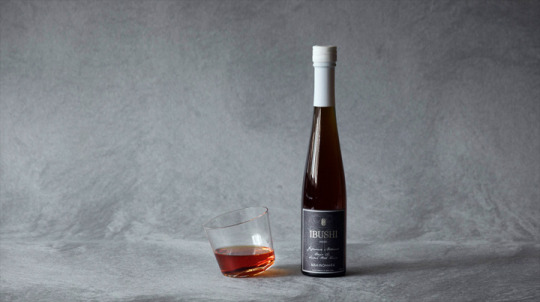
Finally, there were two spirits I tried. One was the Satsuma Shiranami, which is a spirit made from sweet potato- and it sure tasted of it: “earthy, nutty, popped rice, sweet but not sugary, and filling” is how I described it. This would in my mind be a fantastic addition to a hot toddy or pre-Christmas lunch drinks. The second is something I don't anticipate many of you ambling out of your wells to get, but I'll rec it anyway: the Kyoya Shuzo Yuzugin, combines two things that unsettle many people: gin, our proudest spirit, and Japanese botanicals, which can not be to everybody's tastes. Unsurprisingly, it had a deep, floral, long-lasting yuzu fragrance, and remarkably, I noticed a light tongue-buzz feeling, due to the sansho peppercorn. I won't fully get into this now, but the short is that the fruit of the Zanthoxylum trees produce compounds called sanshools, which give an anaesthetic, electrocuting, tingling, numbing sensation, most prevalent in Szechuan cooking, and one that I adore. Sansho peppercorn is Z. piperitum while good ol' Szechuan peppercorn is Z. simulans or bungeanum. While overall I can see more applications for the Satsuma Shiranami, not just in drinks, but as a nice thing to spin around a highball glass while relaxing, as one does when one is 23, if you like both yuzu and gin, and manage to find a bottle, go get it. Also, the bottle's pretty.
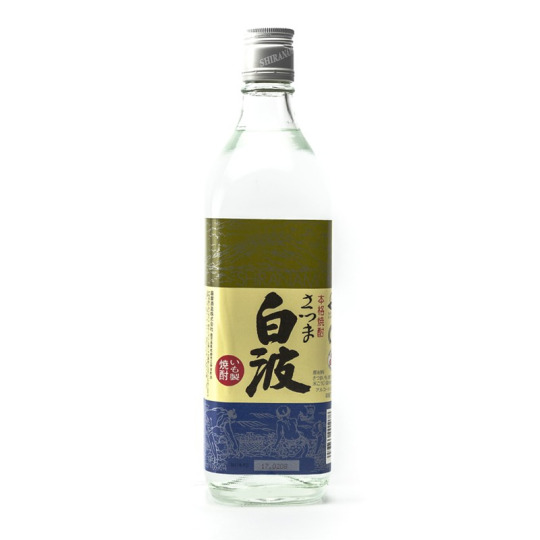
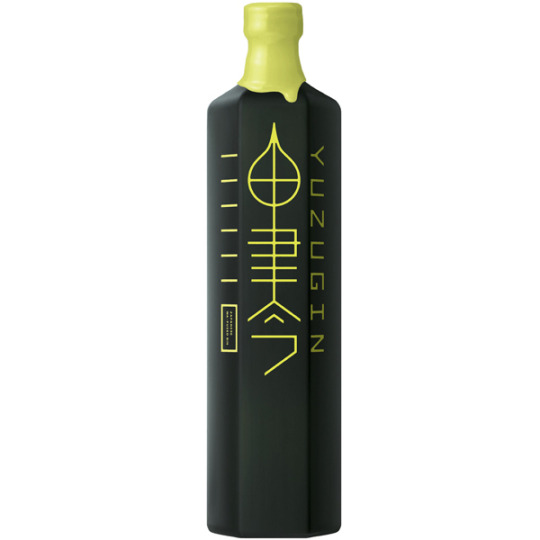
In the drunken stupour that tends to accompany having too many small drinks, I stepped outside and saw a stand selling three of my favourite Japanese snacks: takoyaki, sweet potato korroke and karaage. I got three for three, and sat down heavily in a chair, and watched the crowd pass me by as I had my snacks. Takoyaki is an orbular delicate wheat pancake, filled with chopped octopus. Mine were decorated traditionally, with aonori, aka green laver, mayonnaise and a sweet-savoury glaze made from Worcestershire sauce and reduced sake, soy sauce, mirin, kombu, and katsuoboshi (shaved dried bonito tuna). I like them because they have a wonderfully crunchy outside, and the inside is still kinda like a just-underset egg yolk or slightly underdone pancake batter, or a bechamel sauce. I think it's obscenely delicious, and was thankful at the paucity of octopus bits in the ones they gave me.

Karaage is a deep frying technique different from the better known tempura. In karaage, marinated pieces of meat, most usually chicken, are tossed in potato starch and deep fried until crispy. These had a crusty, gloriously msg-laden shell with tender pieces within. The crust had big crumbs in it, lending a nice variation in texture.
Korokke is a Japonification of “croquette”, where usually mashed potato is stuffed with a filling, rolled in panko, and deep fried. These ones were pure sweet potato, and utterly fantastic. I have a long-held suspicion that the Japanese sweet potato cultivars tower head and shoulders above those grown anywhere else. They tend to have the most amazing chestnutty taste and yielding texture. These were no exception. The korokke were “fudgy” and satisfying, the panko crust so ethereal, it might not have even been there. Of the three fried snacks, they were without a doubt my favourite.
In short, I did not eat or drink one thing on Friday that wasn't delicious, and there were a few that were completely exceptional.
As I walked back from Kensington Olympia to take the bus home, I thought about how I'd been exposed to so many different aspects of the culture of another somewhat strange, tea-obsessed island, and how valuable it was that events like Hyper Japan are put on; raising awareness in not just the more massively marketable aspects of another culture, but their unique traditions also. I had a great time. Since it's now over, I honestly can't wait for the summer one!
3 notes
·
View notes
Text
How to Get Rid of Slugs Naturally
In the cool, wet soils of spring, slugs can decimate young seedlings and early fruits overnight. It can be so heartbreaking to wake up in the morning to destroyed seedlings and nibbled-on strawberries!
Slugs aren’t all bad in the garden (did you know they produce natural fertilizer just like composting worms?). We want to show you how to manage your slug population so you can have robust plants and still maintain a healthy ecosystem.
You're reading: How to Get Rid of Slugs Naturally
What attracts slugs to your garden in the first place?
Wet or damp soil is the number one thing that attracts slugs to the garden. Slugs tend to dry out very quickly, and they love living (and eating!) in a location that stays consistently moist.
We are big proponents of mulching to balance soil temperature, reduce weed competition, and retain moisture, but mulch can also increase slug populations because it helps retain moisture so well.
Growfully Protip
If you have slug issues in your garden, make sure to keep your mulch away from the base of the plant.
What kind of damage do slugs do?
Slugs will eat any kind of foliage, but you’ll often find them doing the most damage to the tender leaves and stems of seedlings. Slugs will also take bites out of vegetables and fruits (particularly soft fruits like strawberries), causing unsightly crops.
Read more: Kitchen gardens – best layouts and tips to start your own vegetable garden plus, what to grow for beginners
Are slugs useful for anything?
It might seem tempting to napalm the slug population after they’ve eaten your strawberries, but slugs aren’t all bad! In fact, a healthy (but well managed!) slug population is good for the garden. Slugs break down garden debris and turn it into nitrogen-rich fertilizer that enhances soil nutrition (similar to worm composting). They also are a natural food source for many beneficial insects, birds, frogs, snakes, and toads.
What repels slugs in the garden?
We believe that whenever you’re dealing with a pest, repelling them should be your first line of defense. After all, pests are only pests because they are eating your garden plants! When they aren’t eating your strawberries, slugs are an important part of the ecosystem—so let’s try to keep them that way.
There are multiple different ways of repelling slugs, so you’ll have lots of options to try to figure out what works best for your garden!
3 Ways to Naturally Repel Slugs (Preventative Measures)
Create a Barrier: Slugs crawl everywhere, and their soft, sensitive bodies do not like to crawl over anything that irritates their skin. Use this to your advantage by circling your plants with a barrier that causes the slugs to turn around and head in the other direction. Coffee grounds, wood ashes, sand, crushed eggshells, and diatomaceous earth (DE) all do this when sprinkled around plants—with DE being the most deadly. Another barrier option is copper tape or copper wire. You place the tape or wire around your plants or garden beds, and when the slug crawls across it, it is given a small electrical shock that is very uncomfortable.
Remove Garden Debris: If you have consistent problems with slugs, after the soil has thawed in the spring, you want to begin to remove garden debris like leaf litter or mulch. Slugs not only like to live in the garden debris, but they also lay their eggs in it.
Increase Populations of Natural Predators with Companion Plants: Slugs are a favorite food of snakes, toads, frogs, beetles, and other beneficial insects. Ground beetles are a common predator of garden slugs, and planting white clover in your garden can help increase ground beetle populations.
4 Cheap Ways to Naturally Get Rid of Slugs
Okay, you tried preventative methods, and now you’re ready to get rid of slugs in your garden without the use of synthetic pesticides. Good news! There are a ton of ways to use traps and baits to reduce the slug population in your garden.
Manually Removing Slugs
As we’ve already talked about, slugs aren’t all bad! If you have a small infestation, just head out after dusk with a headlamp and pick those suckers off your plants. Drop them into a bucket of soapy water to kill them immediately, or move them to an area where birds and snakes can eat them—and the circle of life continues!
Plant Trap Crops
Planting trap crops is easily our favorite way to get rid of slugs and many other common garden pests. The gist is this: plant a crop that the slugs REALLY love to enjoy, they choose that plant from the garden buffet, and then you can sacrifice those plants and concentrate your slug removal methods there.
In general, slugs like to eat the tender leaves and shoots of new seedlings, but some plants are irresistible to slugs at any stage of growth. Slugs absolutely love to eat marigolds and basil. A robust border of either (or both) around your garden can go a long way to draw out slugs from your tender seedlings.
Read more: How to Increase Water Pressure in a Garden Hose
Beer Traps to Bait Slugs
The most common piece of advice you’ll get when dealing with slugs is to put out beer traps. Beer traps are easy and cheap to make, and the traps work well because slugs are attracted to the scent of the yeast in the beer. However, we don’t recommend them as a first line of defense. These traps do drown and kill slugs, but they frequently also kill beneficial insects, so we recommend only going this route if you are dealing with an overwhelming infestation.
To make a beer trap, simply take a clean, shallow container (a cleaned-out tuna can, small yogurt container, or butter tub all work really well), and bury it in the ground with about an inch sticking up out of the soil. Fill the can with beer—any beer works, but slugs tend to really like the yeasty smell of darker beers—and then wait for the slugs to crawl in and meet their demise.
Growfully Protip
Empty and refill your beer traps regularly. Slugs are not as attracted to stale beer as they are freshly-poured.
For beer traps to be successful, you need to place them about every 3 feet—which can become quite costly and labor-intensive for larger growing spaces.
Grapefruit Traps to Get Rid of Slugs
Grapefruit (and other citrus fruit) traps are live traps that are less deadly to beneficial insects than beer traps. Enjoy yourself a half of a grapefruit—scooping out the flesh inside. Then place the empty grapefruit half upside down in your garden. Overnight, slugs will be attracted to the sweet scent and take cover in these citrus domes, and in the morning, you can remove the grapefruit half, take it far away from the garden, and feed the birds!
Growfully Protip
Half a hollowed-out cantaloupe and an orange rind also work well for the grapefruit trap method. Some folks also use upside-down flowerpots or bowls to achieve a similar trap.
What about organic pesticide methods to get rid of slugs (like Sluggo)?
If these methods don’t work for you, the next line of defense would be to look into natural and organic pesticides for tackling slugs. Sluggo by Monterey is a common organic pesticide for slugs and snails made from iron phosphate. It works by disturbing the gut of the slugs after they ingest it, and then they stop eating and eventually die a few days later.
While iron phosphate is definitely an option if you are dealing with a very heavy, very destructive slug infestation, we recommend you try other options first if you are dealing with a minor or moderate infestation. While iron phosphate is generally accepted as safe, it is attractive to pets and birds and has been known to be toxic to some dogs. Use it with caution around pets and children.
Source: https://livingcorner.com.au Category: Garden
source https://livingcorner.com.au/how-to-get-rid-of-slugs-naturally/
0 notes